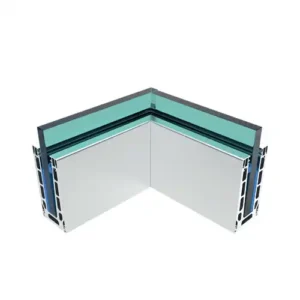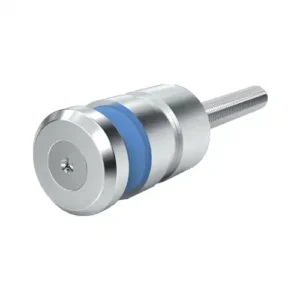What Role Do Glass Mounting Systems Play in Modern Architecture?
In the world of contemporary architecture and industrial design, glass is no longer just a decorative material — it is structural, expressive, and functional. As the use of glass in railings, façades, partitions, and safety barriers continues to grow, the hardware that supports these panels becomes just as important as the glass itself.
Astuna Metal, known for its precision in metal-based architectural systems, offers two distinct yet complementary solutions in this category: the Glass Base System and the Glass Adapter System. While both are designed to hold glass panels safely and elegantly, they serve slightly different structural needs and performance expectations.
Understanding the unique strengths of each system is essential in choosing the right one for your project — whether you’re working on a luxury hotel, a modern office building, or an upscale residential unit.
How Does the Glass Base System Support Form and Stability?
The Glass Base System is designed with architectural strength and grounded stability in mind. It’s made to hold glass panels ranging in thickness from 5 mm to 10 mm, with variable length and height capacity depending on the panel size.

For thinner glass (5 mm), the system supports panels up to 2000 mm in length and 1000 mm in height. As the glass thickness increases to 6 mm, supported length adjusts to 1750 mm and height rises to 1150 mm. For 8 mm panels, it handles 1500 mm in length and 1250 mm in height. Finally, at 10 mm thickness, the glass can be installed at 1250 mm in length with a vertical height of up to 1500 mm.
What this gradual shift tells us is that the Glass Base System is engineered for balanced support — as thickness increases, height can be pushed further while length is reduced, optimizing strength distribution and minimizing bending forces. This makes it an ideal choice for applications where glass will be exposed to frequent pressure or weight-bearing scenarios — like terrace balustrades or shopping mall railings.
Visually, the system offers a minimalist aluminum profile that hides mechanical fixtures while offering a seamless transition from floor to panel. It doesn’t distract from the visual impact of the glass but instead enhances it with clean, uninterrupted lines. Technically, the system is built for long-term durability, with corrosion resistance and thermal stability that stand up well in both indoor and outdoor installations.
What Makes the Glass Adapter System Ideal for Height and Flexibility?
On the other side of the equation is the Glass Adapter System, which puts more emphasis on height optimization and modular adaptability. While also supporting glass panels between 5 mm and 10 mm thick, it introduces subtle yet valuable differences in dimensions.

At 5 mm, the adapter system supports the same 2000 mm length but increases the height to 1100 mm. For 6 mm panels, it holds 1750 mm in length and 1250 mm in height. At 8 mm, it allows for 1500 mm by 1350 mm. Finally, at 10 mm, it matches the base system with a height of 1500 mm and a length of 1250 mm.
That extra 100–150 mm in height at lower thicknesses may seem minor, but it can make a significant difference in applications where visual openness and vertical reach are crucial — such as panoramic office partitions, elevated glass railings, or lobby space dividers. The Glass Adapter System provides that breathing space without compromising safety or stability.
In terms of installation, the system is engineered for fast, precise alignment with minimal on-site modification. This makes it an ideal solution for time-sensitive construction projects or phased developments where system flexibility is vital. The adapter design allows for micro-adjustments during mounting, giving teams more control over the final result.
Aesthetically, the Glass Adapter System also features a discreet frame and slimline fixtures that give the illusion of floating glass. It’s a system designed for those who want the hardware to disappear — leaving only the light and transparency of the glass in view.
Which Glass Support System Is Right for You?
Choosing between the Glass Base System and the Glass Adapter System comes down to the specific demands of your environment. If you need a solution built for firm grounding, consistent load distribution, and long-term durability — especially in high-traffic or outdoor spaces — then the Glass Base System provides the right balance of form and function.
On the other hand, if your project calls for taller glass installations, modular assembly, or quick adjustments on-site, the Glass Adapter System offers more design freedom and operational efficiency. It’s especially well-suited for commercial interiors or hospitality projects where aesthetics and flexibility are both critical.
At their core, both systems are a testament to Astuna Metal’s commitment to quality, performance, and modern architectural vision.


